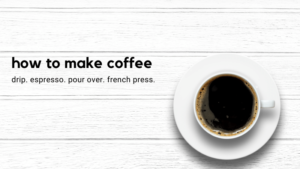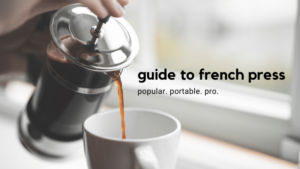What’s the Best Way to Brew Coffee in Your Café?

Choosing the right coffee brewing method can elevate your café’s game. At onlinebaristatraining.com, we’ve trained thousands through our online barista training to master these techniques. Here’s a breakdown of the best methods—pros, cons, and all—to help you decide what fits your shop and your customers. 1. Drip Coffee Best Way to Make: Follow a 2 oz coffee to 6 oz water ratio (2 tbsp per ¾ cup)—tweak to taste. It’s simple: measure water and coffee, grind medium to medium-fine, pop a filter in your machine, add grounds, tap to level, and brew. Our barista course grads nail this daily. Pros: Easy to brew and sip Cost-effective for big batches A café must-have—customers expect this “default” from any coffee barista training spot Cons: Lacks the flavor depth of other methods—no espresso punch or pour-over nuance Stale coffee sits too long; top cafés refresh every 2-3 hours Ideal For: Simple, reliable coffee fans—think classic drinkers from your barista classes online. 2. Espresso Best Way to Make: Grind 18g into a portafilter for a double shot, tap to settle, tamp evenly, and pull a 30g shot in 25-30 seconds (adjust grind if off). Our online barista course perfects this. Pros: Versatile—solo shots or lattes galore Rich, concentrated flavors shine Tons of barista training resources to master it Cons: Strong taste isn’t for all—dilution’s common Less caffeine than drip, despite the buzz Ideal For: Anyone, anytime—espresso’s flexibility is why it’s a barista certification staple. 3. Cold Brew Best Way to Make: Mix 1 cup coarse coffee with 5 cups water (1:5 ratio), stir, rest 5 minutes, stir again, lid on, and chill 12-24 hours. Strain through a filter, dilute 1:1 with water, and serve iced. Pros: Refreshing and smooth Easy prep from our barista lessons online Light, approachable taste Cons: “Duller” flavor misses some notes Undiluted, it’s a caffeine bomb—sip smart Ideal For: Hot days calling for cool, easy-drinking coffee. 4. Iced Coffee Best Way to Make: Brew regular coffee, cool it, pour over ice. Add 2 tbsp milk and adjust. Simpler than barista training courses make it sound! Pros: Flavorful yet refreshing Milk smooths it out Beats hot coffee in summer Cons: Can turn bitter if not balanced Middle-ground vibes—not as bold as drip or light as cold brew Ideal For: Cool coffee without cold brew’s caffeine kick. 5. French Press Best Way to Make: Rinse an 8-cup press with hot water, grind 50g coffee medium, add to press, pour 800ml (205°F) water, stir, and time. At 4 minutes, skim the crust; at 8 minutes, half-press the plunger and pour gently. Pros: Dead simple—barista classes online love it Low waste, no filters needed Rich with most beans Cons: Oily, thick brew isn’t everyone’s cup Stronger taste can overwhelm Ideal For: Waste-free ops and bold roast fans. 6. Pour Over (V60) Best Way to Make: Grind 25g coffee medium-fine, wet a V60 filter, add grounds, and pour 400g boiling water in stages (70g, bloom 45 sec, then 200g, 300g, 400g). Swirl and tap for a flat bed. Precision’s key in our online barista training. Pros: Highlights subtle flavors Smooth, crisp finish Gold standard for light roasts Cons: Tricky to nail—small errors shift taste Too finicky for busy cafés Ideal For: Specialty coffee buffs craving max flavor. Wrap – Up Picking your café’s brew methods shapes your vibe and clientele. Need help perfecting these? Our barista training has you covered—email us at [email protected] with questions! Kickstart your day with morning boost coffee brewing tips. Perfect your methods with coffee shop store design know-how.
The Ultimate Guide to Mastering the French Press

The French Press—a modern gem in coffee brewing—has surged in popularity for its simplicity, speed, and portability. At OnlineBaristaTraining.com, where we offer top-tier online barista training, we see it as a go-to for both budding baristas meaning coffee artisans and café pros. But is it the best brew method for the discerning? Let’s dive into what makes the French Press unique, how to use it, and why it’s a staple in barista training. What is a French Press? Invented in Italy (surprise!), the French Press brews coffee more like tea than drip. This barista course-approved “immersion” method steeps coarse grounds in hot water, extracting tasty compounds evenly. Push the plunger down, and voilà—grounds separate, coffee shines. How’s It Different? …From Drip Brewers? Unlike drip’s percolation, French Press immersion creates a thicker, richer “body”—a texture you’ll feel coating your mouth. Brew the same beans both ways after your coffee barista training, and you’ll spot the weighty difference. Standards lean toward moderate body, but preferences vary—our barista lessons online celebrate that diversity. …From Espresso Machines? Espresso’s fine grind and concentrated punch contrast the French Press’s coarse, diffuse brew. Espresso’s intense; French Press is mellow but risks over-extraction—bitterness from too-long steeping. Our online barista course teaches balance to avoid that “dead” taste. …From Pour Over? French Press versus pour over pits thick and bold against light and nuanced. Pour over wins for flavor complexity—ideal for specialty coffee fans—while French Press takes the crown for ease and portability in barista classes online. How to Use a French Press What You’ll Need: French Press Coffee Grinder Water + boiling method (Optional) Scale, timer (phone works) Steps (Per Our Barista Training Courses): Preheat and clean your press with hot water. Measure coffee—1:16 ratio (25g coffee to 400g water for 12oz). Tweak to 1:15 or 1:17 for strength. Grind coarse (kosher salt texture)—too fine clogs the plunger, too coarse lacks flavor. Add grounds to the press, shake level, pour 212°F water, stir gently, and lid on (don’t press). Wait 4 minutes, then plunge slowly. Serve fast—lingering risks over-extraction. Coffee Selection Any coffee works—experiment! Medium to dark roasts (Sumatran, Brazilian, Ethiopian) amplify the French Press’s bold body, a tip from our barista certification pros. Choosing Your French Press For Home: Size: 12oz (1 mug), 34oz (2 thermoses), or 51oz (big batch). 34oz is versatile—brew little or lots, but pour out fully post-brew. Material: Glass (visible, fun) or stainless steel (durable, hot). Pick what vibes with you—our online barista training says both brew great. For Cafés: Rarely ordered, but handy for backups. Stick to small/medium sizes (freshness matters) and steel for durability—glass if it’s on display. Beyond Coffee Cold Brew with French Press: Use a 1:4 or 1:5 ratio (200-220g coffee for 34oz press), add room-temp water, steep 12-24 hours, half-press, and pour. Filter again if you like. Dilute—it’s potent! Tea with French Press: Adjust water temp (200°F black, 170°F green), steep 1-5 minutes, press gently to preserve leaves. Wrap-Up The French Press is a versatile, user-friendly brew method—perfect for tight spaces or busy mornings. Love cream or sugar? Its bold, thick profile pairs beautifully. Master it with barista training from OnlineBaristaTraining.com—your café (or kitchen) will thank you! Learn French Press via coffee online classes from anywhere. Equip your café with cafe shop design essentials.
What is a Barista? Unveiling the Craft Behind the Coffee

The barista: a cultural icon shrouded in myth. Transient dreamer, aloof enigma, or lowly service worker—depending on who’s spinning the tale. Real baristas meaning coffee pros would chuckle at these tropes. So, let’s brew some clarity on what is barista life really about, from daily grind to career path, with insights from onlinebaristatraining.com. Barista Defined ba·ri·sta /bəˈrēstə, bəˈristə/ (noun): A person who prepares and serves coffee. Google’s got the basics, but there’s more to this craft than meets the eye. Barista Meaning Rooted in the Italian word for “bartender,” “barista” ties coffee to its bar-like origins. Unlike Italy’s espresso-driven coffee bars, today’s specialty scene—shaped by barista training—blends tradition with innovation. Yet, while bartenders snag respect, baristas often fight the “unskilled” label. Truth is, mastering coffee takes serious skill, from pulling shots to winning over customers. Global barista certification competitions prove it’s no small feat. What Does a Barista Do? Sure, they prep and serve coffee—but it’s deeper. Coffee rivals wine in complexity, boasting over four times the flavor notes. A great barista, like a sommelier, decodes these subtleties, a skill honed in coffee barista training. Take espresso: dozens of variables—grind, tamp, timing—shift each shot, and pros pull hundreds daily. Beyond drinks, barista lessons online emphasize customer service as king. Chatting up regulars while nailing orders? That’s an art—representing the shop and brightening days, all at once. Why Become a Barista? Paycheck Reality:Rarely a goldmine—low industry margins keep wages tight. Base pay hovers at $9-$12/hour, but tips at busy spots bump it to $16-$20+, per our barista course grads. Owners aren’t rolling in millions either, but exploitative pay isn’t okay—know your worth. Tips help, though they’re a flawed fix. Many climb to management or beyond for better salaries. Flexible Hours:No 9-5 grind here. Shifts flex with the shop’s rhythm—early opens, earlier closes. Morning people thrive, per barista classes online. Perfect for Students or Side Hustlers:Cafés adapt to schedules, making them ideal for students or multitaskers. Some baristas chase bigger dreams; others live for coffee. Either way, barista training courses build transferable skills—teamwork, people skills—for any gig. Path to Ownership:Dream of your own shop? Start as a barista. It’s not required, but online barista training shows it’s a smart launchpad. Seasoned pros often take entry-level gigs to learn the ropes—humble, practical, and empathy-building. How to Become a Barista Do You Need Training?Nope—many shops hire green, valuing soft skills (chatty, team-ready, quick learners) over espresso chops. Hard skills—like latte art—come easier, per our online barista course. Shy? Cafés can still grow you. Boost Your Resume:Entry-level’s a start, but mastery takes time. Owners rarely double as pro baristas, so external barista training—like ours—sharpens your edge with fresh techniques. Get Certified:A barista certification screams “I’m serious.” Our grads at onlinebaristatraining.com land jobs fast with ours—not a degree, but a bold “I’ve studied coffee” flex. Stand out over blank resumes. Job Hunting: Poached: Service industry goldmine—barista gigs galore. Indeed: Default board, solid options. Craigslist: Sketchy at times, but packed with leads—tread carefully.City or not, coffee’s everywhere—jobs too. Barista Unmasked Forget the myths—baristas aren’t directionless or lesser. They’re skilled, vital, and often passionate, as our barista lessons online reveal. Curious about the trade? It’s welcoming, diverse, and rewarding. Dive in with online barista training at onlinebaristatraining.com — your coffee journey starts here. Discover coffee virtual insights into barista life. Launch your career with coffee store business tips.


